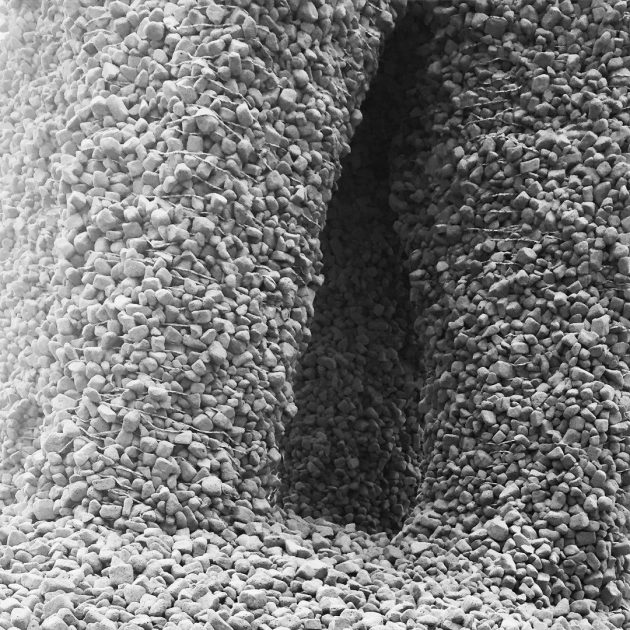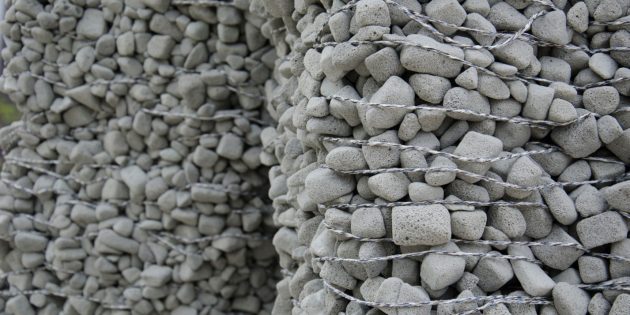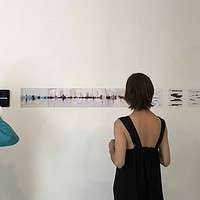The 2015 Chicago Architectural Biennial featured something that no one in attendance had ever seen or even imagined was possible to build. A team of designers from universities located in American and Swiss universities created a 13-foot architectural wonder held up with nothing more than thread. The gravity-defying sculpture was created from tons of gravel and rock. Led by researcher Skylar Tibbits of the MIT Self-Assembly Lab and Gramazio Kohler Research located in Zurich, the gravel and rock sculpture was built with the assistance of a robotic arm.
![[Image used with permission from Redshift]](https://www.architectureartdesigns.com/wp-content/uploads/2016/10/1-20-630x315.jpg)
Image used with permission from Redshift
As the 4D printer created the rocks, a robotic arm attached to it placed a single layer of filament. Once completed, people involved with the project placed one layer of gravel. This process repeated itself thousands of times until the structure was complete. The robotic arm responded to an algorithm previously programmed by the design team.

Image credit: febubufe / Instagram
A Fundamental Challenge to Conventional Architecture
As Skylar Tibbits explains, the process of creating the four-column, 13-foot high rock structure was similar to using powder-based techniques with 3D printers. One major difference is that the granules used in the 4D robotic arm project were quite a bit larger than anything a 3D printer could process. Additionally, it used string as a mechanical binder instead of a typical chemical binder. The thousands of stones in the structure receive their strength from something known as the jamming phenomenon. This refers to numerous tiny particles contained in one space achieving balance from the string’s binding tension.

Image used with permission from Redshift
Compared to architectural projects that came before it, the stone sculpture displayed in Chicago last year goes significantly beyond the dry masonry that relies solely on manual assembly. It is economical, sustainable, and structurally sound as well. The very presence of this sculpture challenges the limits of contemporary architecture.
How the Self-Assembly Lab Created a Hardware Revolution
Current software programs in the building trades have the power to perform such tasks as monitor energy usage and predict how changes in outdoor temperature affect the indoor climate. These are just two examples of the multitude of data these software programs can produce. This has led to an unexpected hardware revolution, which has in turn led to the materials revolution championed by Skylar Tibbits.
Working in his MIT-based Self-Assembly Lab, Tibbits helped to create the stone structure displayed in Chicago as well as dozens of other innovative building projects. He sees the rock project as a launching point for more practical architectural uses in the future. The revisable concrete used to build the sculpture could also be used as a strong building material that doesn’t require previous molding or formwork. An added bonus is that this type of concrete has much less of an environmental impact than concrete currently used in the construction industry.
Watch the deconstruction of the Rock Print here!














